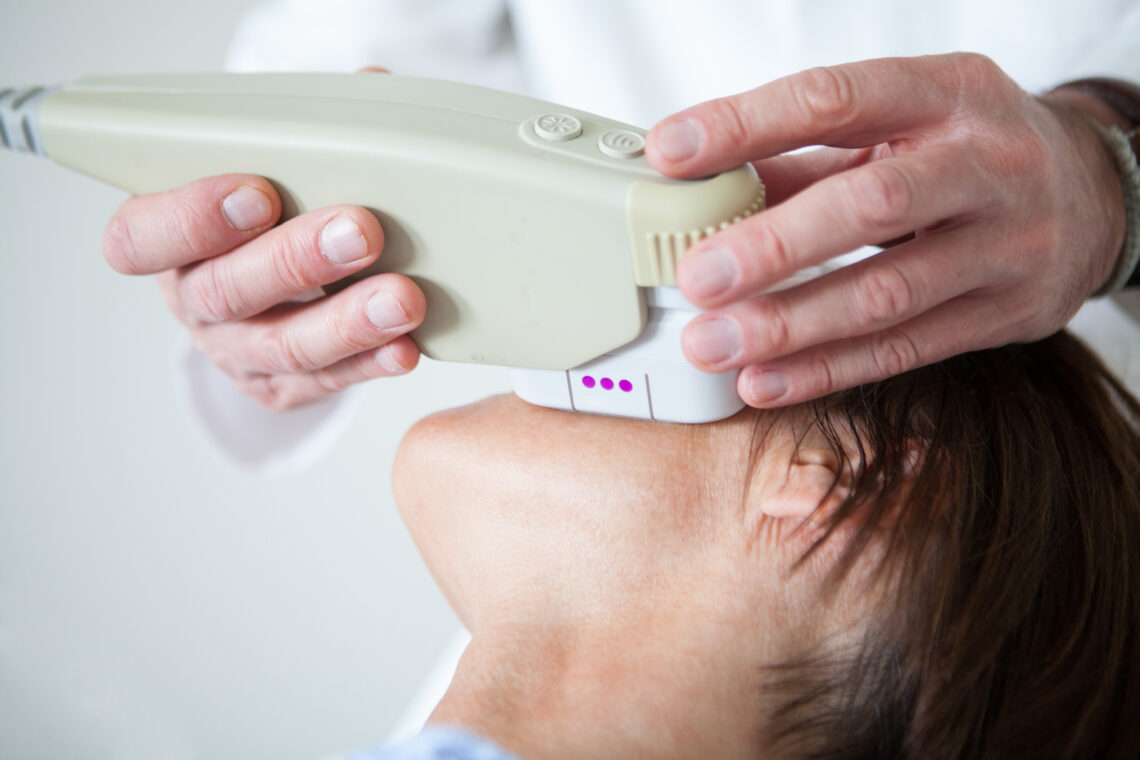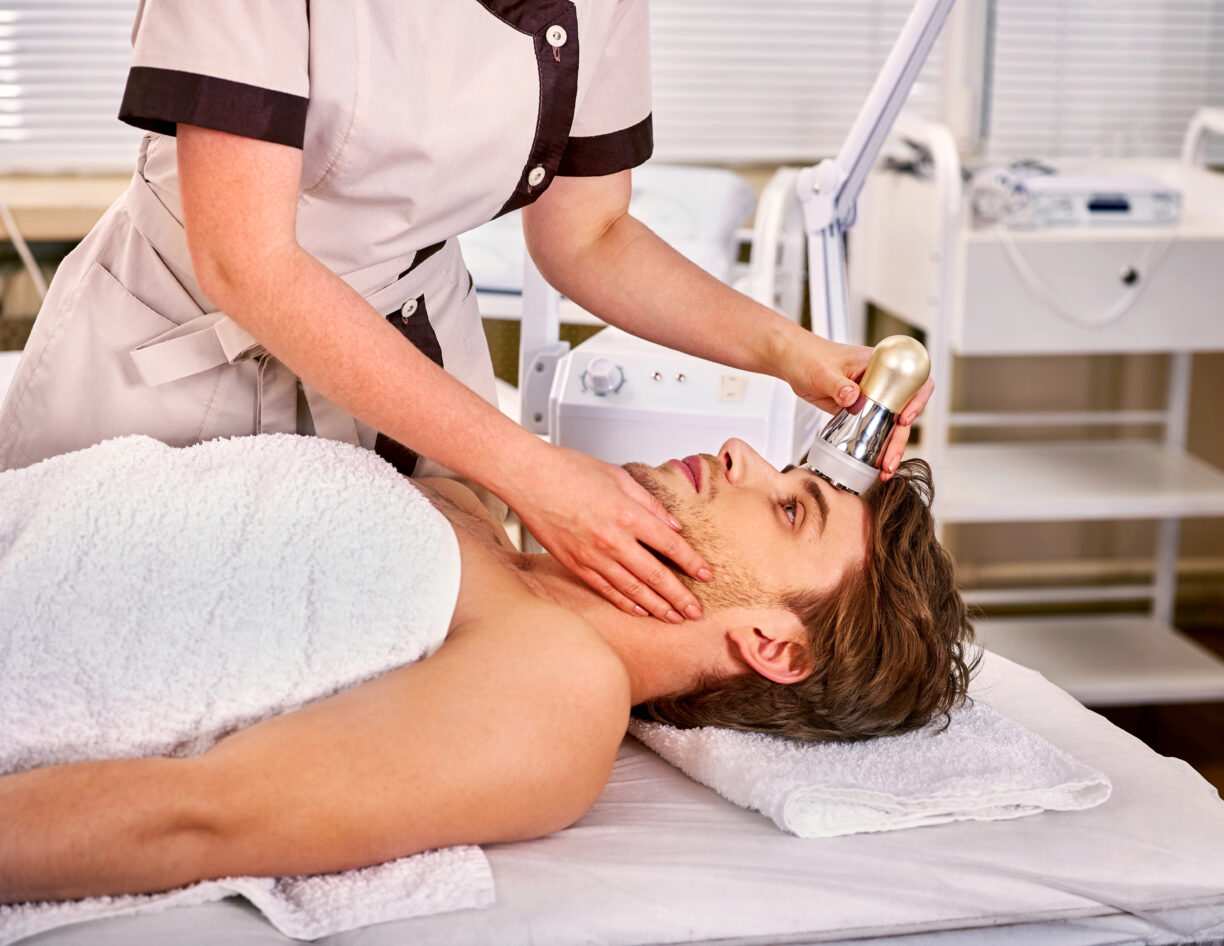Ultherapy is a non-surgical solution that offers lifting and tightening benefits when considering skin rejuvenation options. Utilising ultrasound technology stimulates the production of collagen, thereby helping to lift and tighten the skin naturally. This treatment has garnered significant attention for its ability to enhance appearance without invasive surgery. It appeals to those seeking a more youthful look without the downtime and risks associated with traditional surgical procedures.
In this detailed guide, we will explore the risks and benefits of Ultherapy treatment, providing you with a balanced perspective to help you decide whether it’s the right choice for your aesthetic goals.
What is Ultherapy?
Ultherapy is a clinically approved therapy that utilises focused ultrasound energy to target the deeper layers of the skin. This innovative approach stimulates collagen production, a crucial protein maintaining skin elasticity and firmness.
As a result, patients experience a noticeable lifting and tightening effect, providing a more youthful appearance. This treatment is FDA-approved for several applications, including lifting the skin on the neck, chin, and brow areas. Additionally, it effectively improves the appearance of lines and wrinkles on the décolletage.
Unlike surgical procedures, Ultherapy is non-invasive and requires no downtime, making it a frequently chosen option for those seeking subtle yet effective enhancements to their skin’s appearance.
Benefits of Ultherapy
Ultherapy provides several advantages for individuals looking to enhance their appearance without the complexities of surgical interventions. From its non-surgical approach to minimal recovery time, the benefits of Ultherapy go beyond simple lifting and tightening of the skin.
Non-Surgical with Gradual Results
Ultherapy is a standout skin treatment that does not require conventional surgery. It uses focused ultrasound energy to target the deeper layers of the skin, right where collagen is located. This energy boosts the body’s collagen production process without cutting or disrupting the skin’s surface.
Consequently, patients see a gradual improvement in their skin’s lift and tightness. These enhancements develop over two to three months as new collagen is produced, resulting in naturally improved skin elasticity and firmness.
No Recovery Time Needed
A key benefit of Ultherapy is no recovery period after the treatment. Unlike surgical options that may require days or weeks for recovery, Ultherapy enables individuals to immediately continue their daily activities, whether going back to work, attending social events, or engaging in physical activities.
This attribute is particularly beneficial for those with busy schedules who cannot take time off for lengthy recovery periods. Patients value the convenience and minimal interruption to their routines.
Documented Results
The effectiveness of Ultherapy is documented through thorough clinical trials and research. Findings from these studies, published in respected medical journals, show high levels of patient satisfaction with the treatment’s ability to naturally enhance and tighten skin. These scientific validations affirm the treatment’s reliability, reassuring those considering it.
Reports highlight noticeable enhancements in areas like the brow, neck, and under the chin, fostering a rejuvenated and refreshed look. This evidence supports Ultherapy as a reliable option for non-surgical aesthetic enhancement.
Risks of Ultherapy
While Ultherapy is safe for most people, like any medical procedure, it carries some risks. Understanding these risks is crucial for anyone considering this treatment.
Mild Side Effects: After undergoing the procedure, some common side effects might occur, including temporary redness, swelling, and tenderness at the treatment site as the body adjusts to the treatment. These symptoms are generally mild and typically resolve independently within a few hours to a few days following the procedure, making them manageable for most patients.
Potential for Discomfort: It’s important to know that some patients may experience discomfort during the treatment. This discomfort can vary based on individual pain tolerance and the treatment area. To help manage any discomfort, providers often apply topical anaesthetics before the treatment begins, or they might adjust the intensity of the treatment to better suit the patient’s comfort level.
Rare but Serious Complications: Although it is uncommon, there are instances where more serious side effects may occur. These can include temporary numbness or bruising at the treatment site. In rare cases, there have been reports of nerve damage that could lead to temporary muscle weakness. Fortunately, these complications typically resolve over time with proper care and follow-up, ensuring patients can return to normal activities without long-term issues.
Choosing the Right Provider
The success and safety of Ultherapy heavily depend on the provider performing the treatment. Choosing a qualified and experienced practitioner is crucial to ensure the best outcomes.
Qualifications and Experience: Ensure your provider is trained and certified to perform Ultherapy. Having the right credentials is essential, as experienced practitioners are more likely to deliver effective results and are adept at handling any complications that may arise. It’s a good idea to inquire about their background, the number of treatments they’ve performed, and any additional training they’ve undertaken in non-invasive cosmetic procedures.
Consultation Process: A thorough consultation should always precede the treatment. During this consultation, your provider should take the time to assess your skin type and condition, discuss your specific aesthetic goals, and explain the entire procedure in detail. They should outline realistic outcomes and potential risks to ensure you clearly understand what to expect. This is also an opportunity for you to ask questions and address concerns, ensuring that you feel comfortable and confident in your decision.
Follow-up Care: Choosing a provider who offers comprehensive follow-up care after the treatment is important. This demonstrates their commitment to patient safety and satisfaction and promptly addressing issues. Follow-up care may include monitoring your progress, providing guidance on post-treatment skincare, and addressing any side effects or concerns that might arise. Knowing that your provider is attentive and responsive can greatly enhance your overall experience and results.
Conclusion
Ultherapy offers a solution for those looking to rejuvenate their appearance without surgery. It’s a non-invasive procedure that uses ultrasound technology to lift and tighten the skin, providing a more youthful look. While Ultherapy carries some risks, such as temporary discomfort or redness, the benefits of a procedure with no downtime and gradual, natural-looking results are compelling.
By choosing a qualified provider who understands your specific needs and discussing the potential risks and benefits, you can make a well-informed decision about whether Ultherapy suits you. This treatment can particularly appeal to individuals who want to enhance their appearance without the commitment or recovery time associated with surgical facelifts.
Read more beauty articles at ClichéMag.com
Images provided by Deposit Photos, BingAI, Adobe Stock, Unsplash, Pexels, Pixabay & Creative Commons


